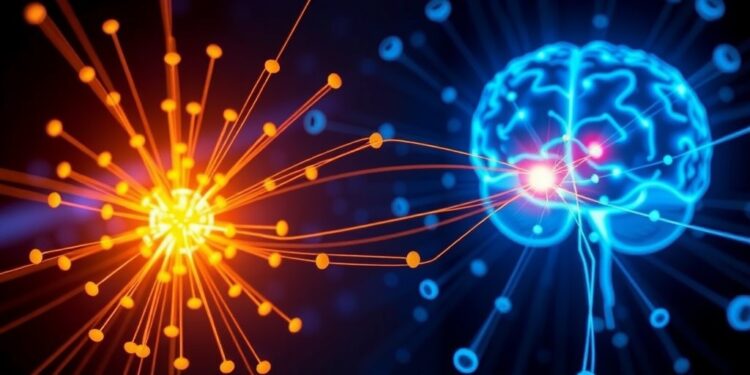Parkinson’s disease (PD) ranks as the second most prevalent neurodegenerative disorder, affecting millions globally. It is predominantly marked by motor dysfunction, which severely impacts the quality of life of those diagnosed. The underlying pathology of PD is significantly characterized by the abnormal accumulation of α-synuclein (α-syn) proteins. These proteins form insoluble fibrils and Lewy bodies, contributing to the degeneration and ultimate death of dopaminergic neurons located in the substantia nigra of the midbrain. This degeneration leads to the core symptoms of Parkinson’s disease, including tremors, rigidity, and postural instability.
In recent years, researchers have been exploring non-invasive methods to stimulate the brain, minimizing the risks associated with surgery. Among these methods are transcranial direct current stimulation (tDCS) and transcranial magnetic stimulation (TMS). These techniques have shown promise in enhancing cortical excitability. However, they come with inherent limitations, including inadequate penetration depth and lack of spatial resolution, which restricts their efficacy. This highlights the urgent need for advanced non-invasive deep brain stimulation technologies that not only overcome these barriers but also offer improved spatial resolution for targeted brain modulation.
In a groundbreaking study published in Science Advances, a research team led by Prof. CHEN Chunying from the National Center for Nanoscience and Technology (NCNST) of the Chinese Academy of Sciences introduced an innovative wireless photothermal deep brain stimulation nanosystem known as Au@TRPV1@β-syn nanoparticles (ATB NPs). This pioneering system represents a significant advancement in non-invasive approaches to neurodegenerative disorders, particularly Parkinson’s disease. It achieves precise modulation of degenerated neurons by directly stimulating the endogenous expression of the thermosensitive TRPV1 receptor in neurons, thus offering a new pathway for treatment.
The ATB NPs consist of three integral modules. The first is a photothermal conversion module, which utilizes gold nanoshells (AuNSs) to activate TRPV1 ion channels through photothermal effects. The second module is a targeting component, which employs TRPV1 antibodies to specifically target dopaminergic neurons that exhibit high TRPV1 expression. Finally, the degradation module incorporates β-syn peptides containing a near-infrared-responsive linker, which binds to the hydrophobic domain of the non-amyloid-β component of α-synuclein, facilitating the degradation of pathological α-syn fibrils.
Subsequent exposure to an 808 nm pulsed near-infrared laser resulted in the ATB NPs functioning as nanoantennas, converting light energy into heat to activate the TRPV1 receptors. This activation led to the influx of calcium ions (Ca2+) and the generation of action potentials, crucial for neuronal signaling. Concurrently, the nanoparticles released β-syn peptides, which played a pivotal role in activating chaperone-mediated autophagy pathways, ultimately facilitating the clearance of α-syn aggregates and reducing the burden of pathological fibrils.
The outcomes of this study have profound implications for Parkinson’s disease treatment. The interaction between the nanoparticles and the neuronal environment resulted in the restoration of the interactive network of dopaminergic neurons, significantly enhancing their capacity for dopamine release. Consequently, this improvement translates to noticeable enhancements in the motor functions of PD model mice, offering hope for more effective therapeutic strategies.
This wireless deep brain stimulation nanosystem presents several major advantages over conventional methods. Firstly, it utilizes the endogenously expressed TRPV1 receptors found in dopaminergic neurons, negating the need for invasive surgical procedures and implanted neural electrodes. Secondly, the integration of near-infrared laser technology allows for precise spatiotemporal modulation of degenerative neurons within specific brain regions, further increasing the specificity and effectiveness of the treatment. Lastly, its excellent biosafety profile suggests that this new approach could be suitable for clinical use, minimizing the risks typically associated with invasive procedures.
Future research will undoubtedly focus on the scalability of this technology and its application in more extensive clinical trials. Should the encouraging results observed in preclinical models translate to human applications, this wireless DBS nanosystem could pave the way for a new era in the treatment of Parkinson’s disease and other neurodegenerative disorders.
In summary, the introduction of ATB NPs marks a significant milestone in the quest for more effective treatments for neurodegenerative diseases. As researchers continue to refine and explore the potential of nanotechnology in medicine, the prospect of improving patient outcomes and enhancing quality of life is becoming increasingly tangible.
Subject of Research: Parkinson’s disease treatment using wireless photothermal DBS nanosystem
Article Title: A nanoparticle-based wireless deep brain stimulation system that reverses Parkinson’s disease
News Publication Date: 15-Jan-2025
Web References: https://www.science.org/doi/10.1126/sciadv.ado4927
References: 10.1126/sciadv.ado4927
Image Credits: National Center for Nanoscience and Technology
Keywords
Parkinson’s disease, deep brain stimulation, TRPV1 receptor, nanotechnology, photothermal therapy, neurodegeneration, dopaminergic neurons, α-synuclein, nanoparticles, therapeutics.





